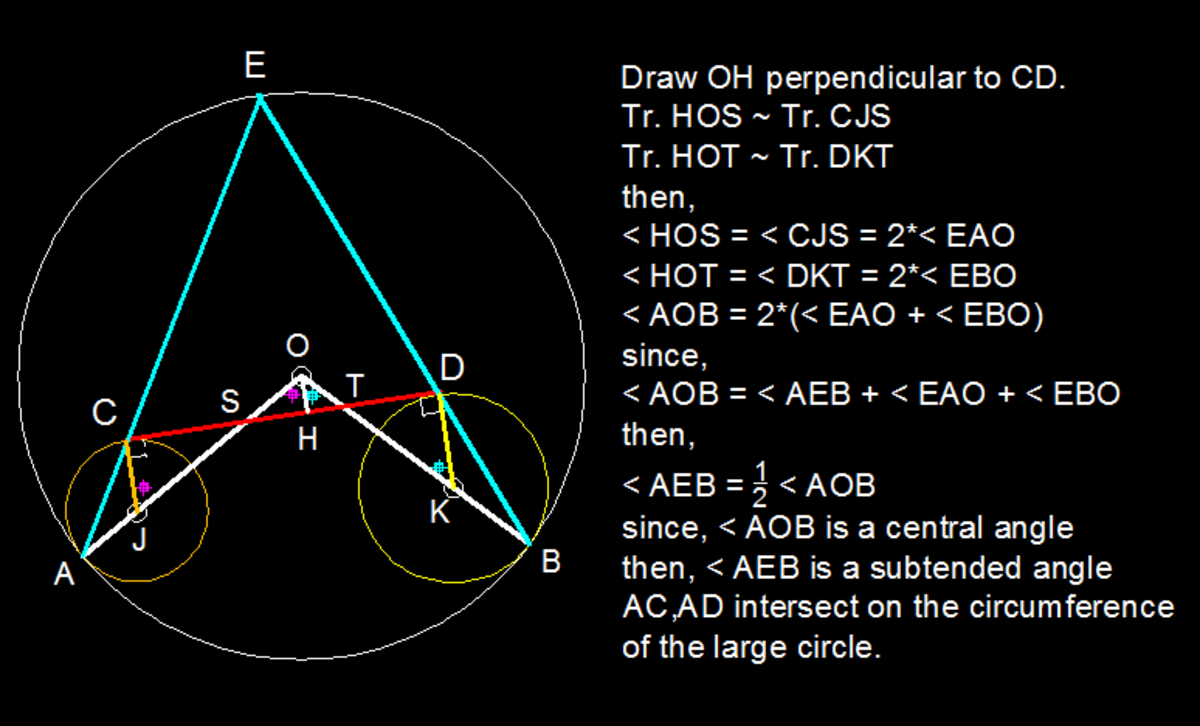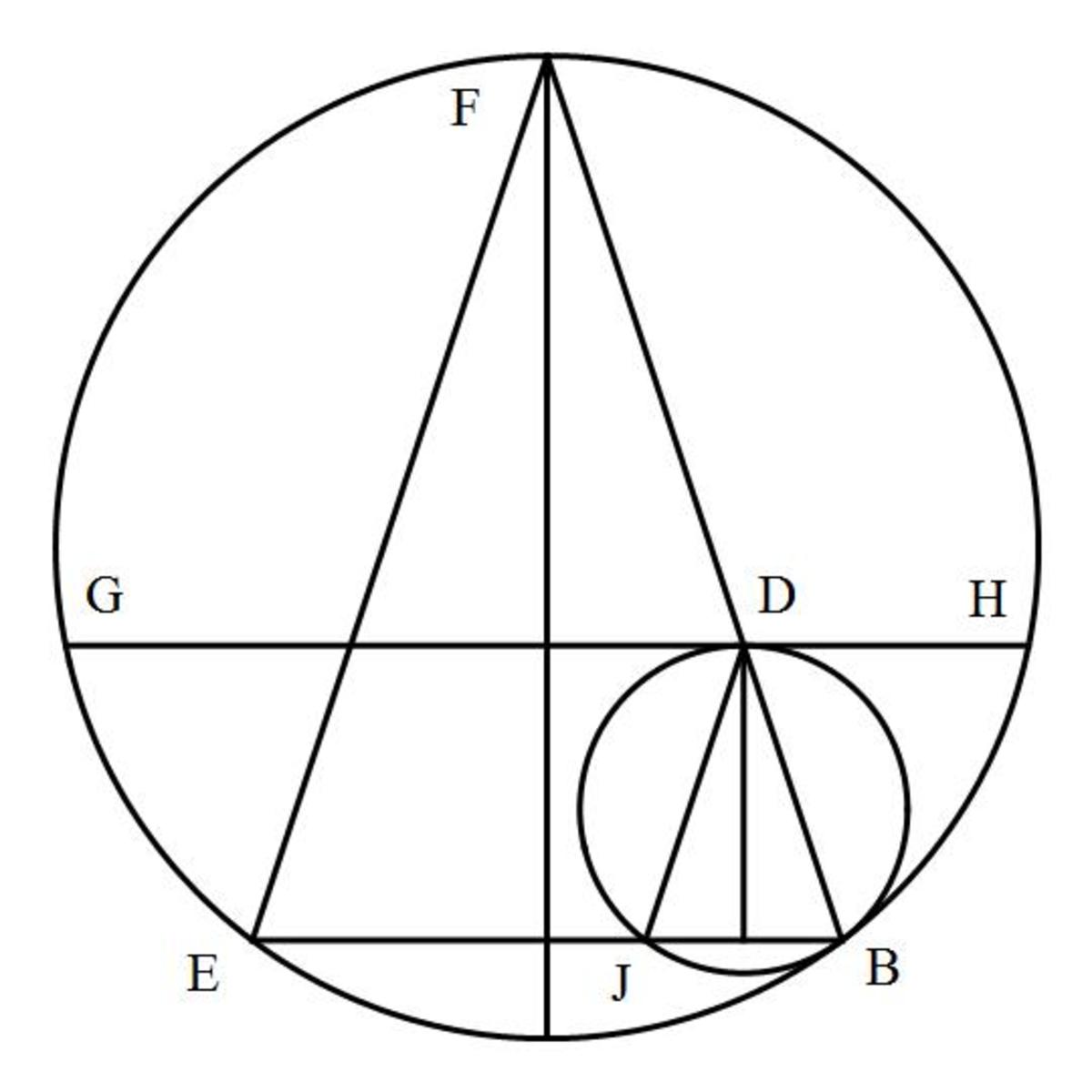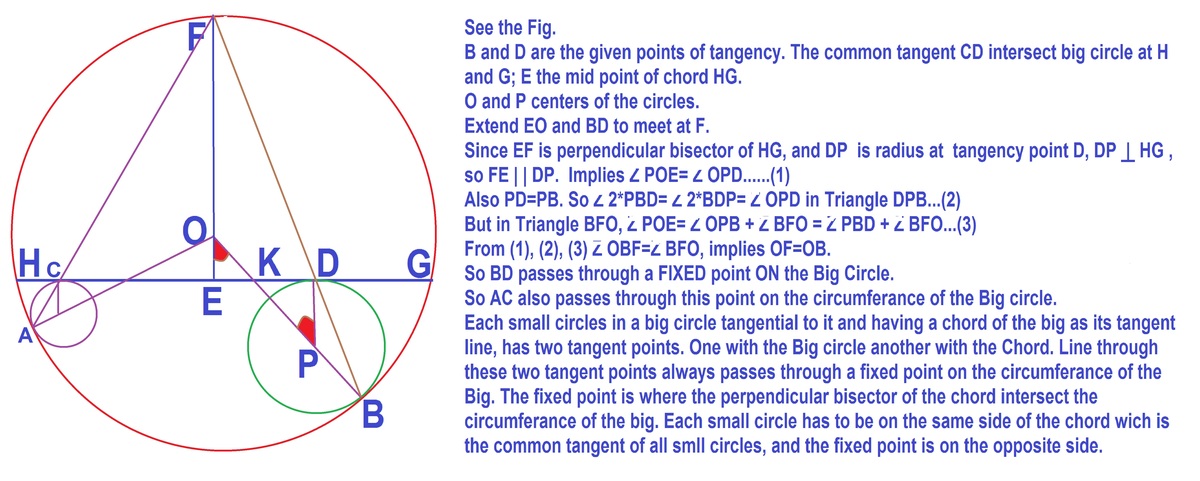Where Do They Intersect?
In a large circle, we draw 2 circles that are each internally tangent at and . We then draw the common exterior tangent .
Where do the lines and intersect?
This section requires Javascript.
You are seeing this because something didn't load right. We suggest you, (a) try
refreshing the page, (b) enabling javascript if it is disabled on your browser and,
finally, (c)
loading the
non-javascript version of this page
. We're sorry about the hassle.




Claim: The line AC intersects the large circle at a point P A C , such that the tangent to the large circle is parallel to C D .
Proof: Think about the expansion about point A, which brings the small circle to the large circle.
The image of point C will be moving along the line AC. The image of point C will also lie on the large circle. Hence, the image of point C will be P A C .
The tangent CD will continue to have the same slope, so the tangent at the image of point C will have the same slope as CD, thus they are parallel.
Claim: The line BD intersects the large circle at a point P B D , such that the tangent to the large circle is parallel to C D .
Proof: Similar to previous claim
Claim: P A C = P B D
Proof: The tangents at these points have the same slope, and lie on the same side of C D which intersects the circle. There is a unique point that satisfies these conditions.
Hence, the lines intersect on the circle, at a point which is tangential to CD.
The idea presented here is known as homothety , which is one of my favourite results in Euclidean Geometry. This problem is one of my favourite ones to demonstrate it's power in simplicity.